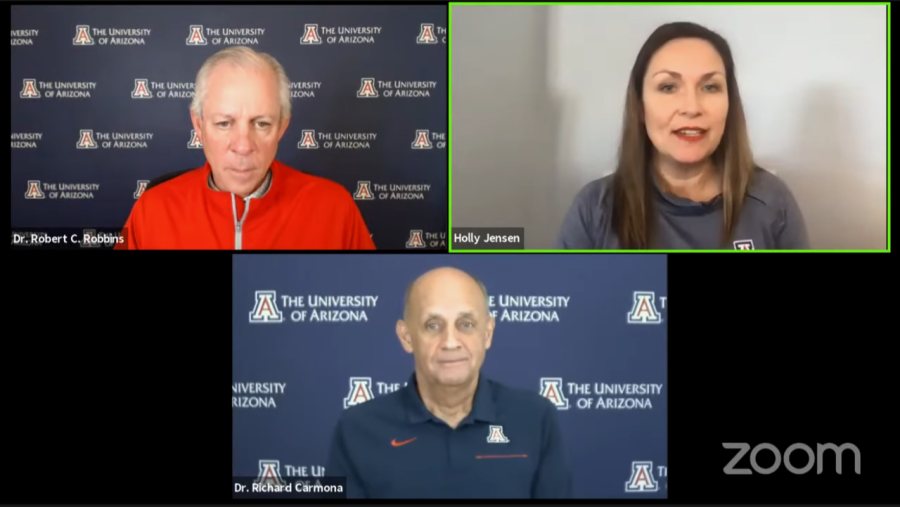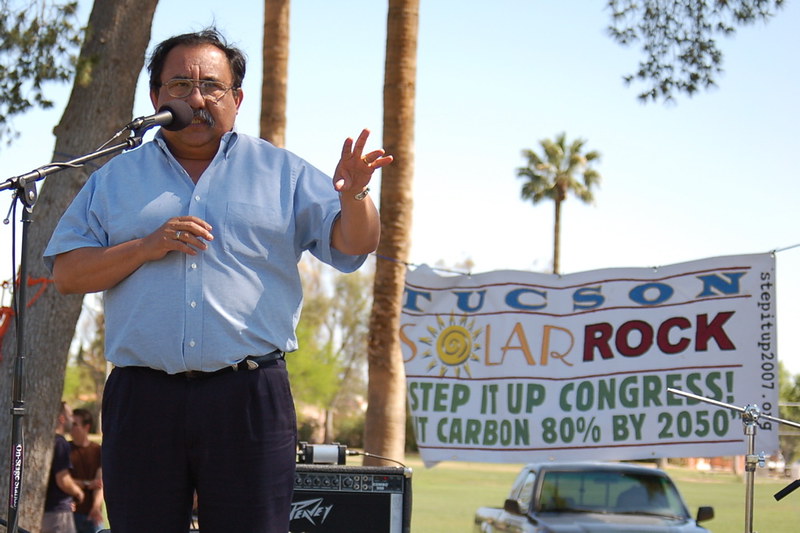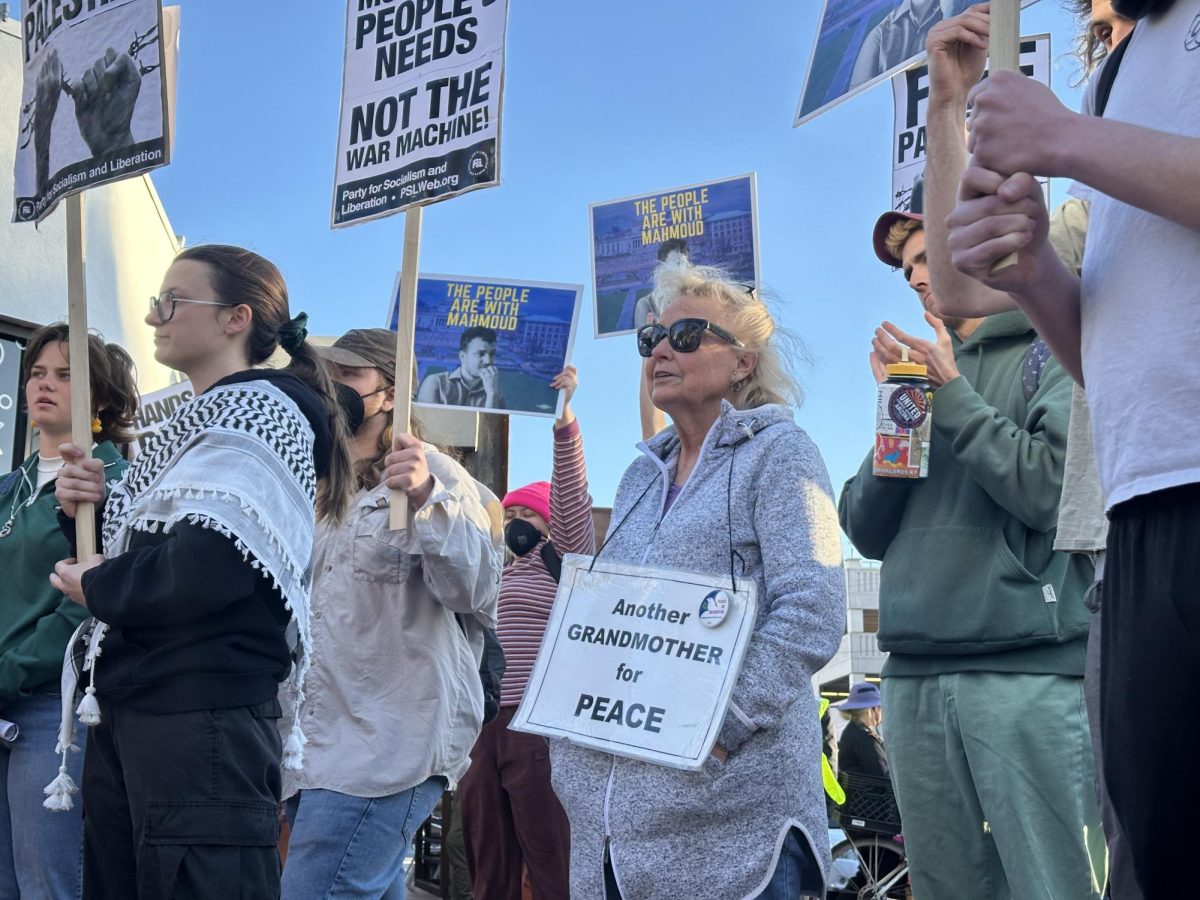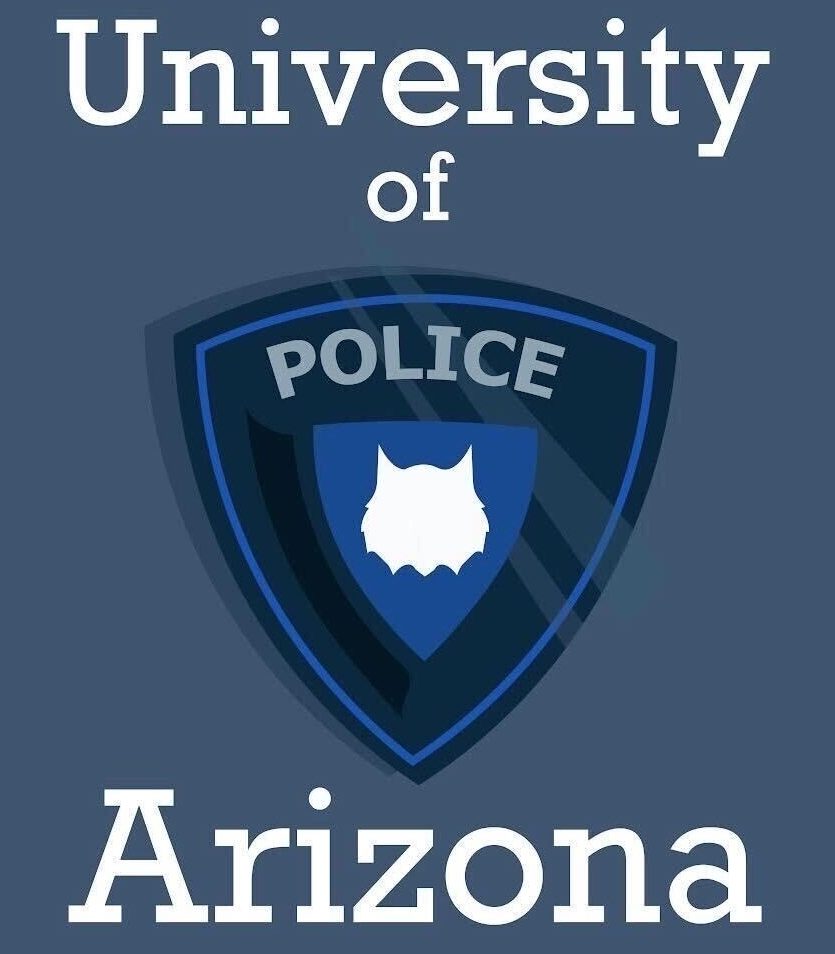The University of Arizona’s COVID-19 reentry task force met Monday morning to discuss the second wave of coronavirus case surges nationwide.
UA President Dr. Robert C. Robbins reiterated his statement that the university will continue in Phase 2 of reentry, with in-person and flex in-person classes of 50 or less having the option to meet. He also said that the university will likely begin the spring semester in Phase 2 and testing will be mandated for any students living or taking classes on campus.
RELATED: Teaching assistants reflect on instruction in a pandemic
The UA is continuing with its Test All, Test Smart initiative. Robbins spoke on the numbers from this week’s round of testing.
“We administered a total of 7,541 tests from Monday, Nov. 9, to Sunday, Nov. 13, with 65 positive cases identified,” Robbins said. “This is an increase of not 1,927 tests administered from the previous week, a change of 34.”
Transmission of the virus seems to be on the decline in the university’s zip code area.
“Overall, the 85719 zip code rate of transmission has declined with the Rt number dropping to 1.33, and that’s down from about two last week,” Robbins said. “This is still obviously higher than we would like, but it is a significant improvement over last week when the number was over two.”
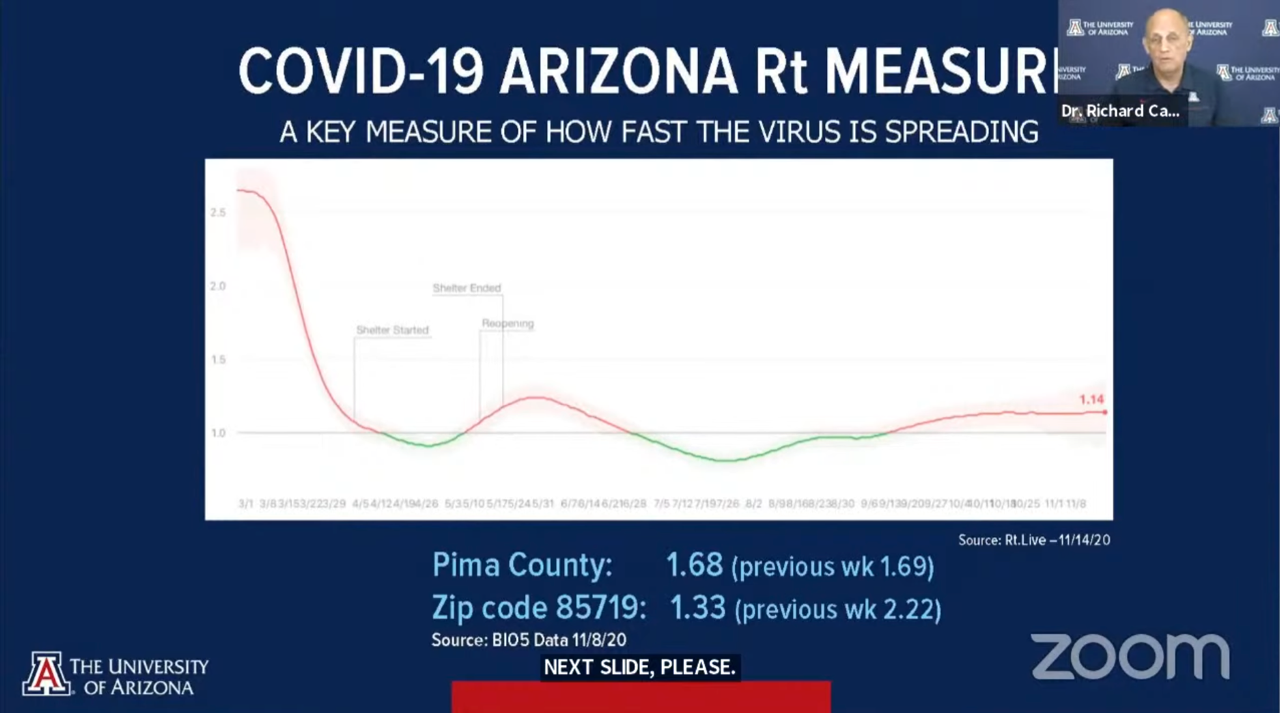
Despite this, the virus continues to spread in and around Pima County.
Testing within the university community shows a 1% positivity rate, up from the previous week. As of 8 p.m. on Nov. 16, 83 tests out of 8,660 administered in the last 10 days returned positive. Of those tests, 63 tests were off-campus students, 13 were employees and 17 on-campus students.
Positive cases in Pima are reaching levels similar to those of the peak July surge. A total of 462 cases of COVID-19 were reported in Pima County on Nov. 9, the largest single-day case count reported since July 30.
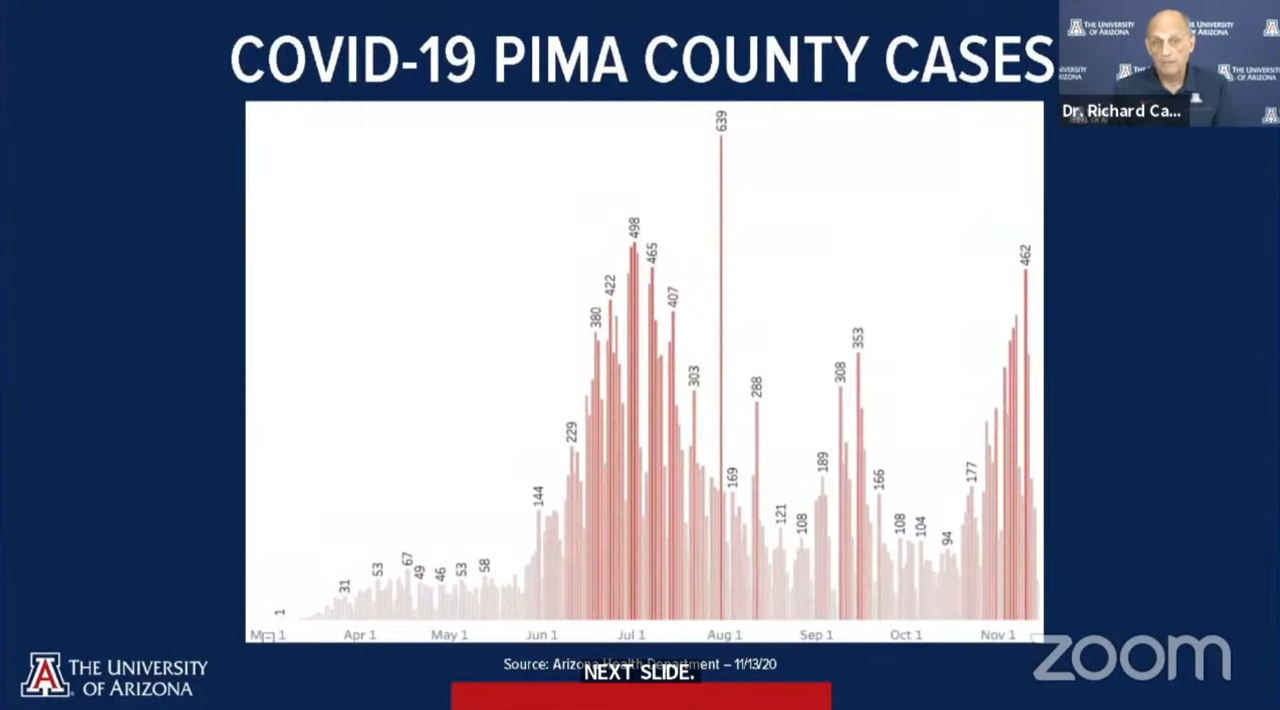
“Our nation is at a critical juncture now,” said task force Director Dr. Richard Carmona. “Again, not only in Pima County, not only in the state of Arizona, cases are surging. If you look at the heat map across the United States, almost every state is an orange or red color, which basically depicts rapidly rising cases in the United States. Over 11 million cases now, over a million deaths. This is catastrophic and in order for this to be controlled, we must adhere to the best public health practices that the president continues to reiterate.”
The recent surge in cases is especially worrisome because students will be traveling home for the holidays within the next two weeks, which means that virus transmission will likely spike. For family and friends helping students move out, testing is available provided by the county.
“Friends and family of our students living in Pima County can test at several new locations set up by the county with no appointments necessary,” Robbins said.
In non-COVID-19 related news, the president made note of some recent accomplishments of the university. A ceremony was held for the installation of flags representing Arizona’s tribal nations in the UA Bookstore.
“I want to highlight the amazing dedication ceremony we held for the new installation of flags from Arizona’s 22 native nations,” Robbins said. “This display in the university bookstore, where we have other national flags exhibited. This is an important step recognizing the sovereignty of the native nations in Arizona and signifies our commitment to work with them for the good of their students, our state and the university.”
RELATED: Election 2020: A look at the unprecedented wave of poll worker intimidation
Robbins also commented on the results of the university’s “day of giving,” a 24-hour fundraiser to fund student success initiatives and scholarships, as well as the football game against USC.
“The university’s first-ever day of giving resulted in over $1 million contributed by alumni and supporters in just over 24 hours, dedicated to supporting our students through scholarships which during this time is greatly needed,” Robbins said. “We were able to cap off homecoming with a great football game against USC because of our aggressive testing program in the bubble, which is working for our student-athletes. We had no positive tests from either team during the Friday and Saturday testing, which I think is a testament to the discipline and commitment of our student-athletes.”
As the eventful fall semester comes to a close, Robbins reminded viewers that the community’s work is only half over.
“It’s been a long tough semester with a lot of hard work, and I would say we’re really only approaching half time. We’ve got a whole semester in the spring,” Robbins said.
Follow Kristijan Barnjak on Twitter



